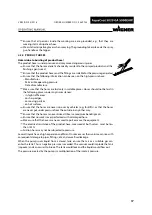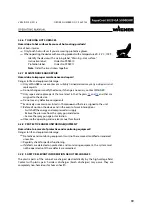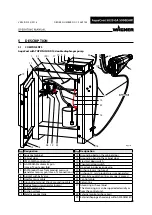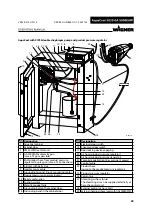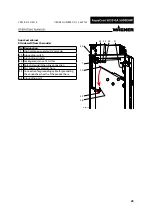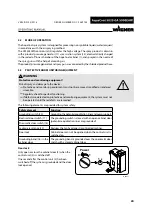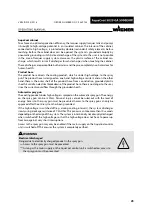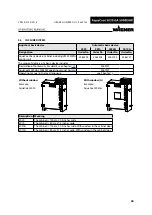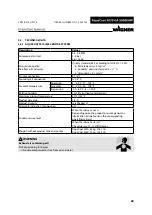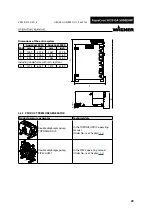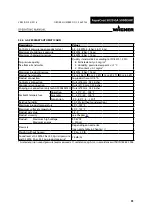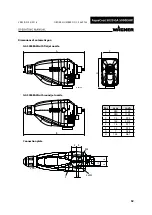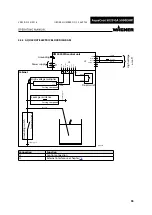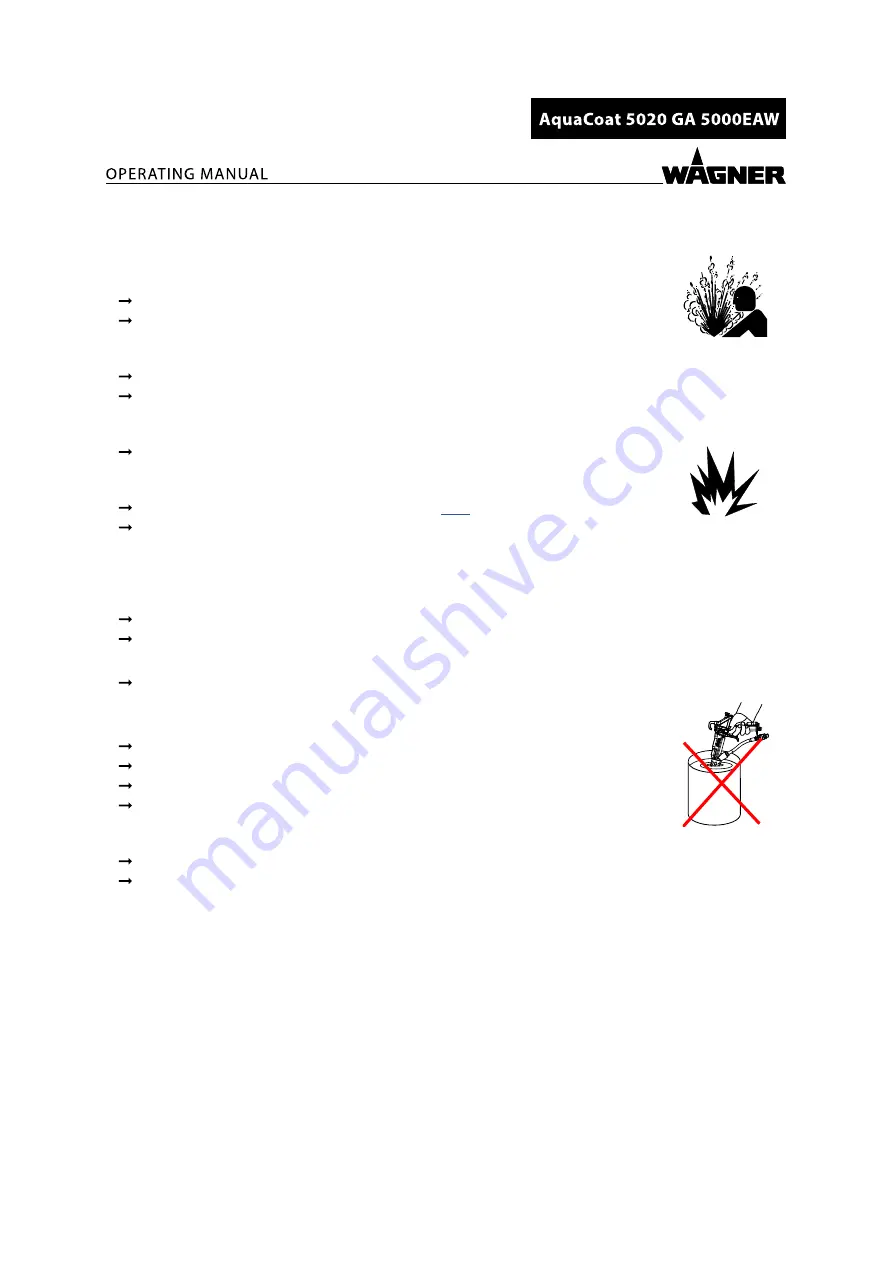
18
VERSION 03/2018
ORDER NUMBER DOC 2369735
4.2.5 CLEANING AND FLUSHING
Hazard due to cleaning and flushing!
Explosion hazard and damage to the device.
Preference should be given to non-ignitable cleaning and flushing agents.
When carrying out cleaning work with flammable cleaning agents, make sure that all
equipment and resources (e.g., collection tank, funnel, transport cart) are conductive
or static dissipative and grounded.
Observe the specifications of the lacquer manufacturer.
Ensure that the flash point of the cleaning agent is at least 15 K above the ambient
temperature or that cleaning is undertaken at a cleaning station with technical
ventilation.
Never use chloride or halogenated solvents (such as trichloroethane and methylene
chloride) with units containing aluminium or galvanized and zinc-plated parts. They may
react chemically thus producing an explosion danger.
Take measures for workplace safety (see Chapter
).
When commissioning or emptying the device, please note that an explosive mixture
may temporarily exist inside the lines and components of equipment:
– Depending upon used coating product,
– depending on the flushing agent (solvent) used,
an explosive mixture may temporarily exist inside the lines and items of equipment.
Only electrically conductive tanks may be used for cleaning and flushing agents.
The tanks must be grounded.
An explosive gas/air mixture forms in closed tanks.
Never spray into a closed tank when using solvents for flushing.
External cleaning
When cleaning the exterior of the device or its parts, also observe the following:
Relieve the pressure from the device.
De-energize the device electrically.
Disconnect the pneumatic supply line.
Use only moistened cloths and brushes. Never use abrasive agents or hard objects
and never spray cleaning agents with a gun. Cleaning the device must not damage it
in any way.
Ensure that no electric component is cleaned with or immersed into solvent.
Which cleaning agent is used to clean the spray gun depends on which parts of the
spray gun have to be cleaned and which product has to be removed. When cleaning
the spray gun, only use
non-polar cleaning agents
to prevent conductive residues
on the surface of the spray gun. Should it however, be necessary to use a polar
cleaning agent, all residues of this cleaning agent have to be removed by using a non-
conductive and non-polar cleaning agent, once the cleaning is finished.














